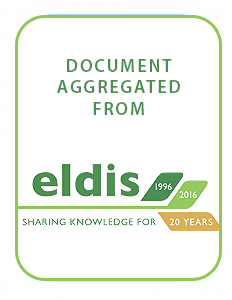Resource information
This paper argues that mining can not be considered ‘sustainable’ if indigenous cultures are rendered unsustainable in the process. Given that many remaining unexploited ores lie under indigenous lands, there is increasing pressure to mine on or near indigenous lands. While mining has the potential to empower indigenous peoples, previous encounters have stripped them of their sovereignty, traditional wealth and have posed multiple impoverishment risks.The paper:develops a framework to map the encounter between indigenous peoples and the industryreviews the history of previous encounters to highlight the strategies and tactics used by governments, companies, NGOs, international financial intermediaries and indigenous peoplesdevelops an empowerment model, including fifteen sustainability elements, and argues that the more these elements are incorporated into encounters, the greater the chances of a sustainable outcome for indigenous peoples and other stakeholdersFindings of the paper include:encounters between indigenous peoples and the mining industry have largely resulted in a loss of sovereignty for traditional landholders, and the creation of new forms of poverty due to a failure to avoid or mitigate impoverishment risks that accompany mining developmentnon-monetary indigenous ‘wealth’, which exists within their understandings of their social and environmental surroundings is threatened when faced with mining-induced displacement or resettlementmitigation of mining-induced impoverishment risks is possible, but is not a priority for the mining industryThe paper concludes that the probability of an empowered, sustainable outcome increases as each of the following elements is incorporated in a mining encounter:sovereignty is respected and strengthenedthe rights and access to indigenous land and nature is securedat the beginning, both the indigenous and non-indigenous stakeholders’ presuppositions about one another are aligned with factthe desired outcomes of the encounter for indigenous peoples emerge from meaningful, prior informed consent and participationnon-indigenous stakeholders fully and opportunely disclose to the indigenous group their plans, agreements and financial arrangements related to the indigenous group in a culturally appropriate manner and languagelikewise, the non-indigenous stakeholders identify and disclose all the risks (social, economic, environmental) of a proposed mining endeavourprovisioning of benefit-sharing arrangements that step beyond compensation for damagesindigenous peoples, as informed group, have the right to approve, reject or modify decisions affecting their livelihoods, resources and cultural futuresshould restoration of a disturbed habitat prove impossible, then the non-indigenous stakeholders make provisions for an improved habitat that supports a lifestyle acceptable to indigenous peoplesthe basic human and civil rights are protected, as specified in international conventionsthe focus of the encounter is on protecting indigenous wealth, especially their social relations that guide the sustainable use of their natural resourcesfinancial and institutional arrangements are forged that bridge the discrepancy between the multigenerational timeframe of indigenous peoples and the short-time frame of mininga guarantor to assure compliance with and funding of any negotiated and mutually satisfactory agreementsIn addition, the paper recommends an extension of the environmental precautionary principle approved in Rio 1989 to the impact of mining on indigenous lands.


